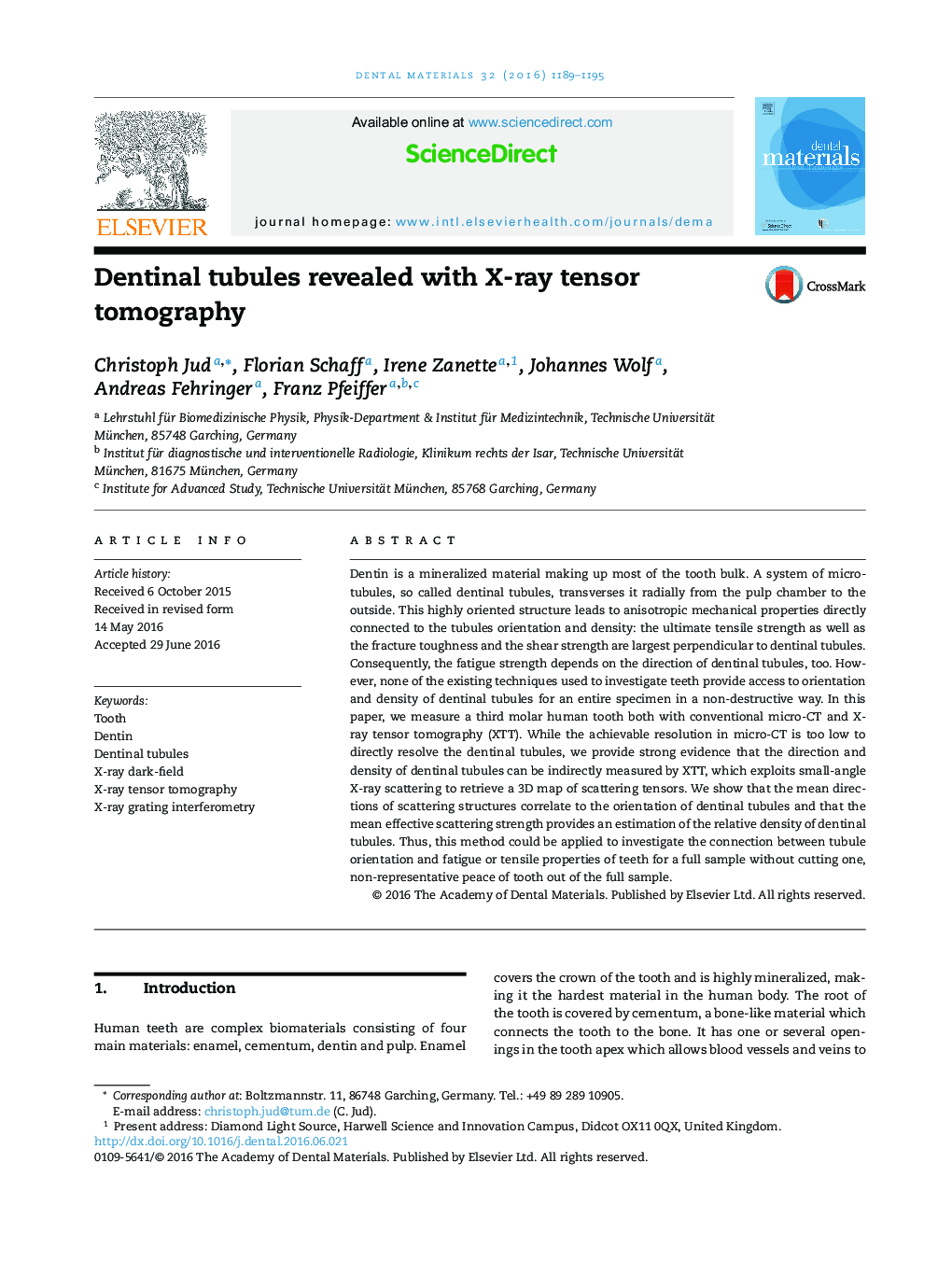| Article ID | Journal | Published Year | Pages | File Type |
|---|---|---|---|---|
| 1420370 | Dental Materials | 2016 | 7 Pages |
•A wisdom tooth was measured with both X-ray tensor tomography and state of the art micro-CT.•Micro-CT was not capable of resolving the dentinal tubules for the whole tooth.•We measure the tooth with X-ray tensor tomography, which yields small-angle scattering tensors fully in 3D.•The direction of dentinal tubules corresponds to the direction of least scattering.•We provide evidence that the density of dentinal tubules is correlated to the scattering strength by simulating different densities and diameter of dentinal tubules.
Dentin is a mineralized material making up most of the tooth bulk. A system of microtubules, so called dentinal tubules, transverses it radially from the pulp chamber to the outside. This highly oriented structure leads to anisotropic mechanical properties directly connected to the tubules orientation and density: the ultimate tensile strength as well as the fracture toughness and the shear strength are largest perpendicular to dentinal tubules. Consequently, the fatigue strength depends on the direction of dentinal tubules, too. However, none of the existing techniques used to investigate teeth provide access to orientation and density of dentinal tubules for an entire specimen in a non-destructive way. In this paper, we measure a third molar human tooth both with conventional micro-CT and X-ray tensor tomography (XTT). While the achievable resolution in micro-CT is too low to directly resolve the dentinal tubules, we provide strong evidence that the direction and density of dentinal tubules can be indirectly measured by XTT, which exploits small-angle X-ray scattering to retrieve a 3D map of scattering tensors. We show that the mean directions of scattering structures correlate to the orientation of dentinal tubules and that the mean effective scattering strength provides an estimation of the relative density of dentinal tubules. Thus, this method could be applied to investigate the connection between tubule orientation and fatigue or tensile properties of teeth for a full sample without cutting one, non-representative peace of tooth out of the full sample.
Graphical abstractFigure optionsDownload full-size imageDownload high-quality image (92 K)Download as PowerPoint slide
